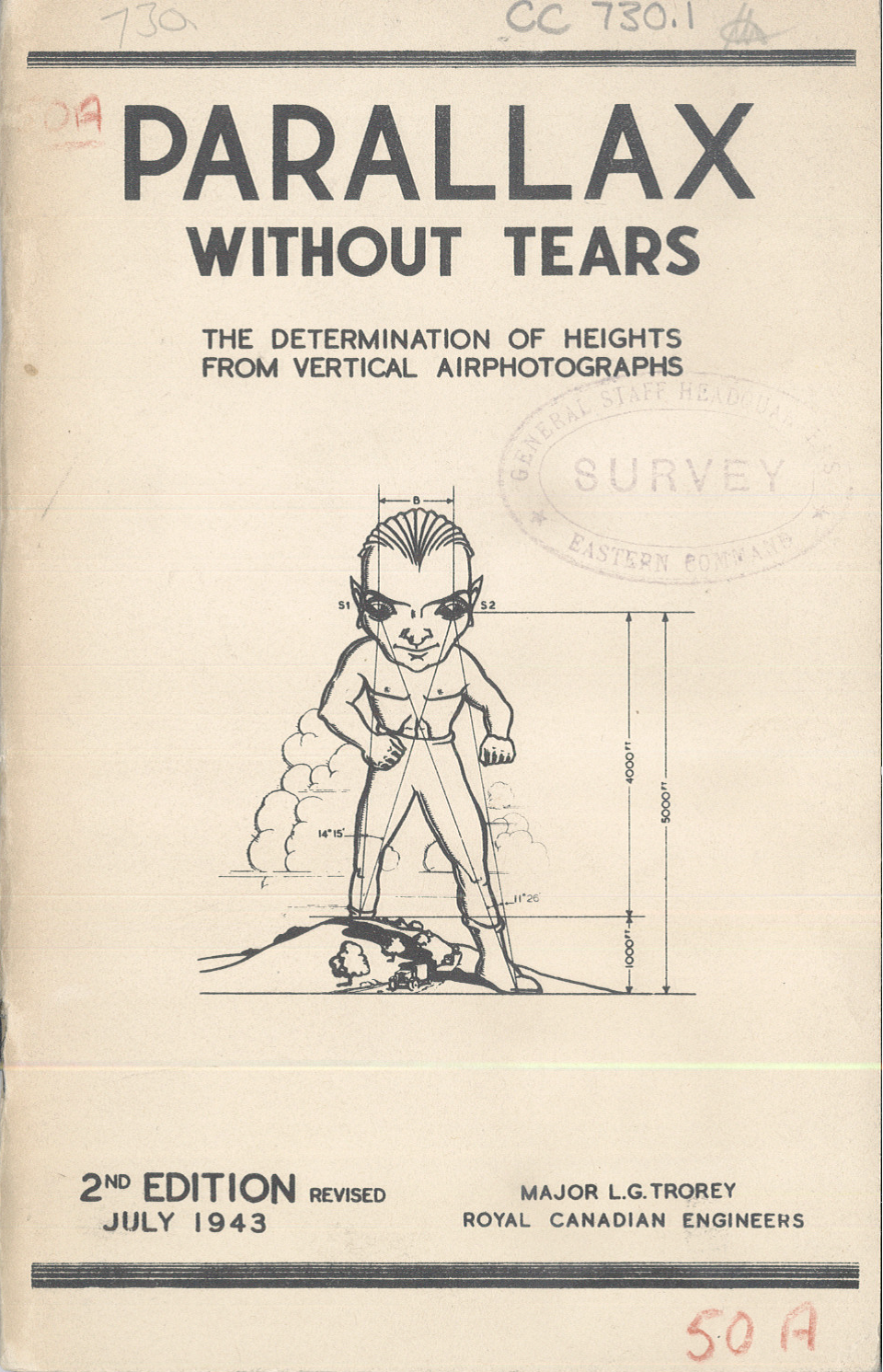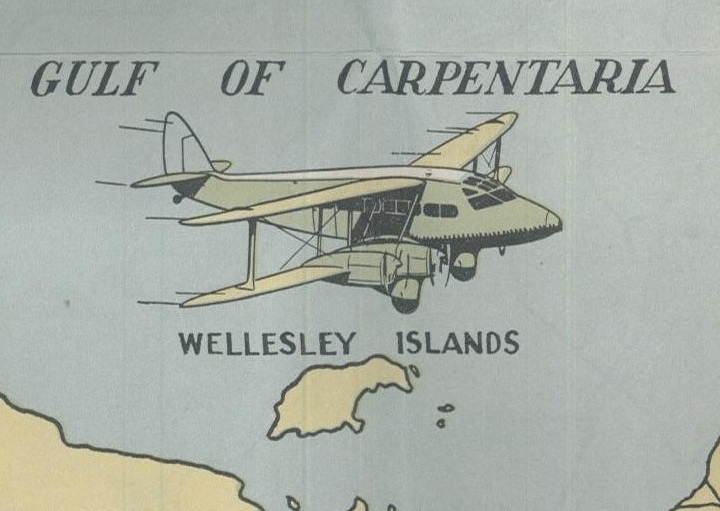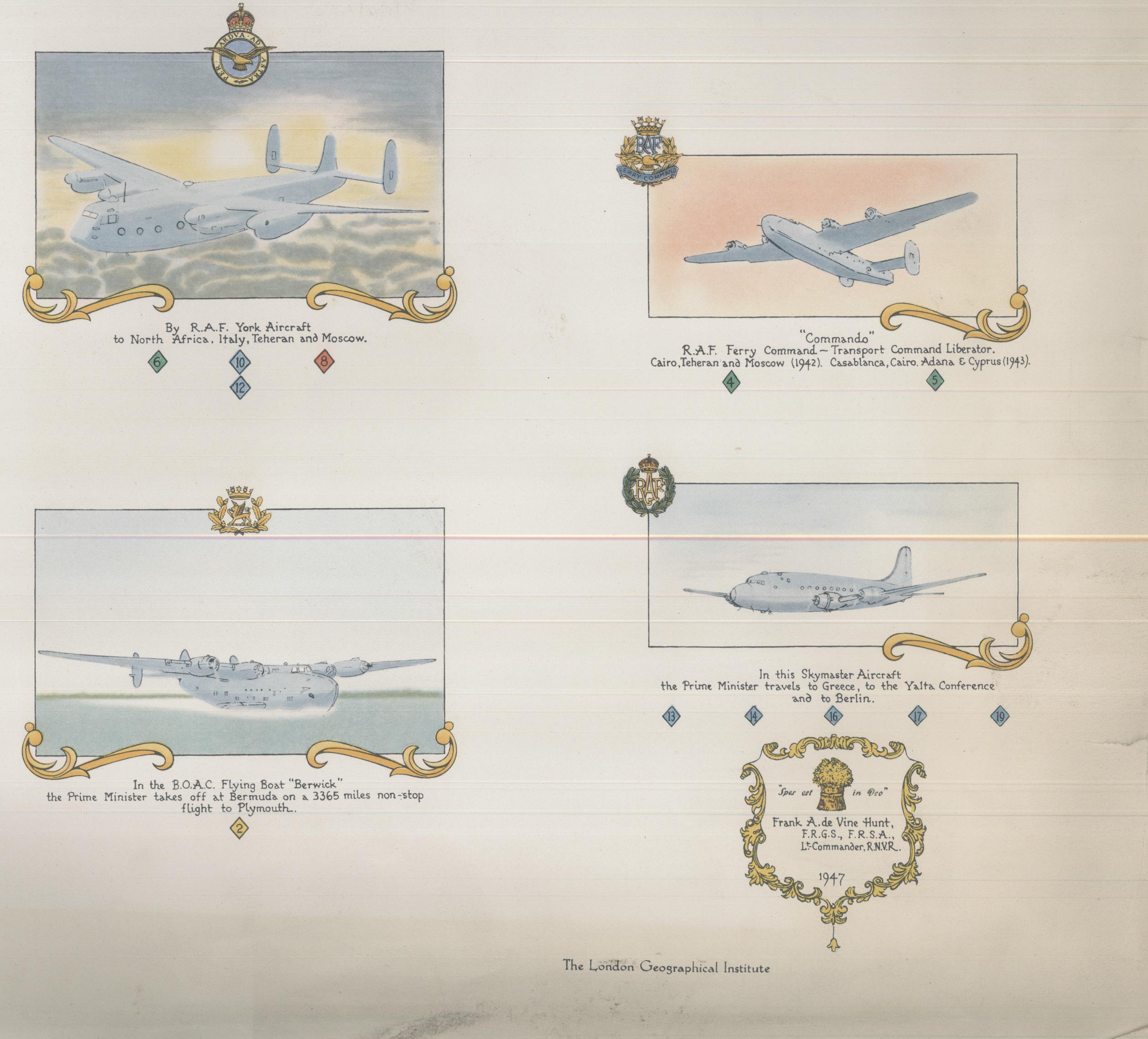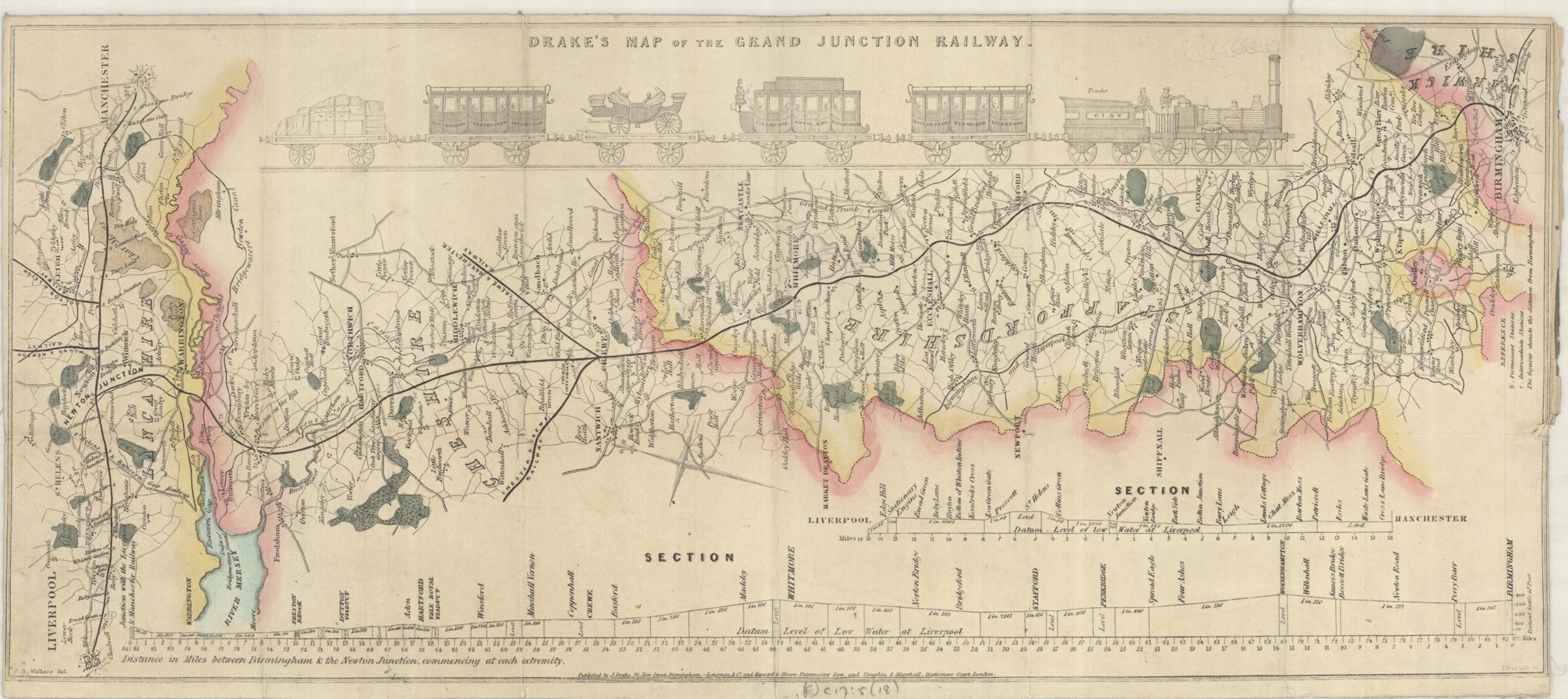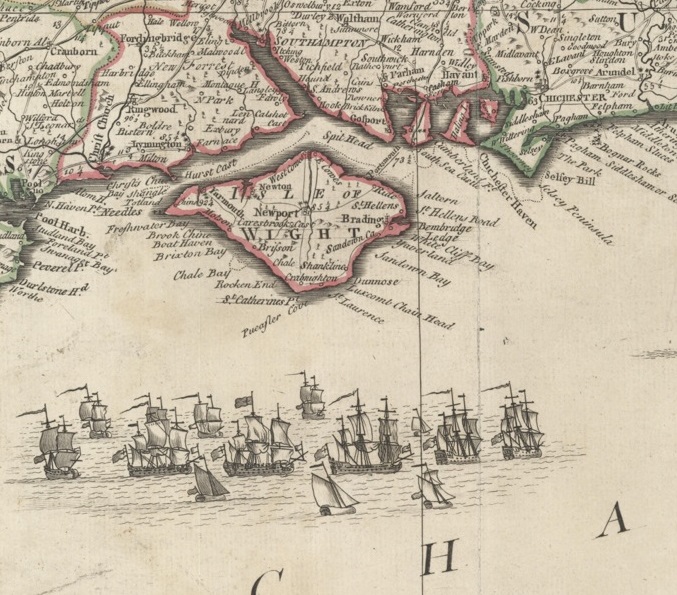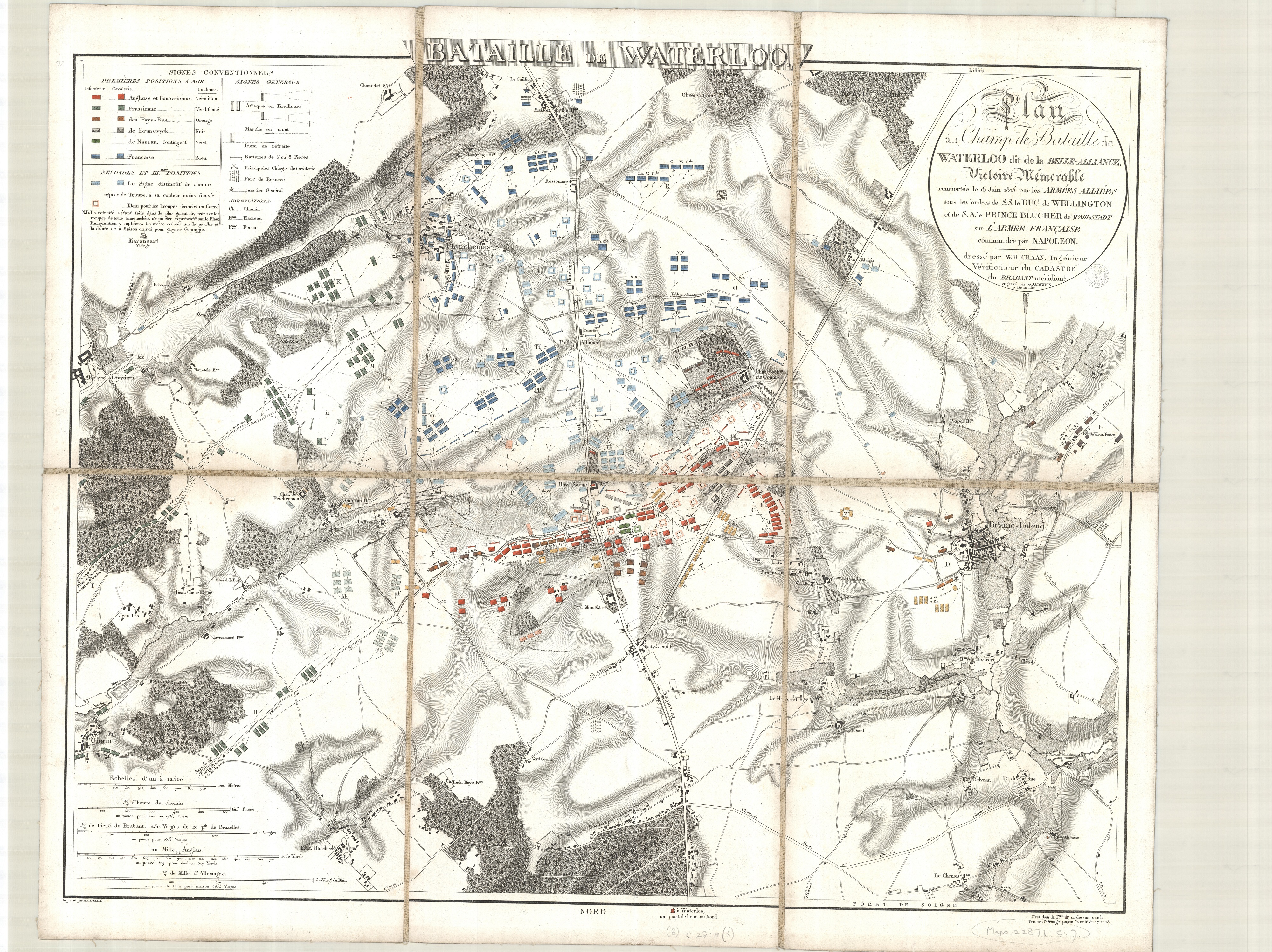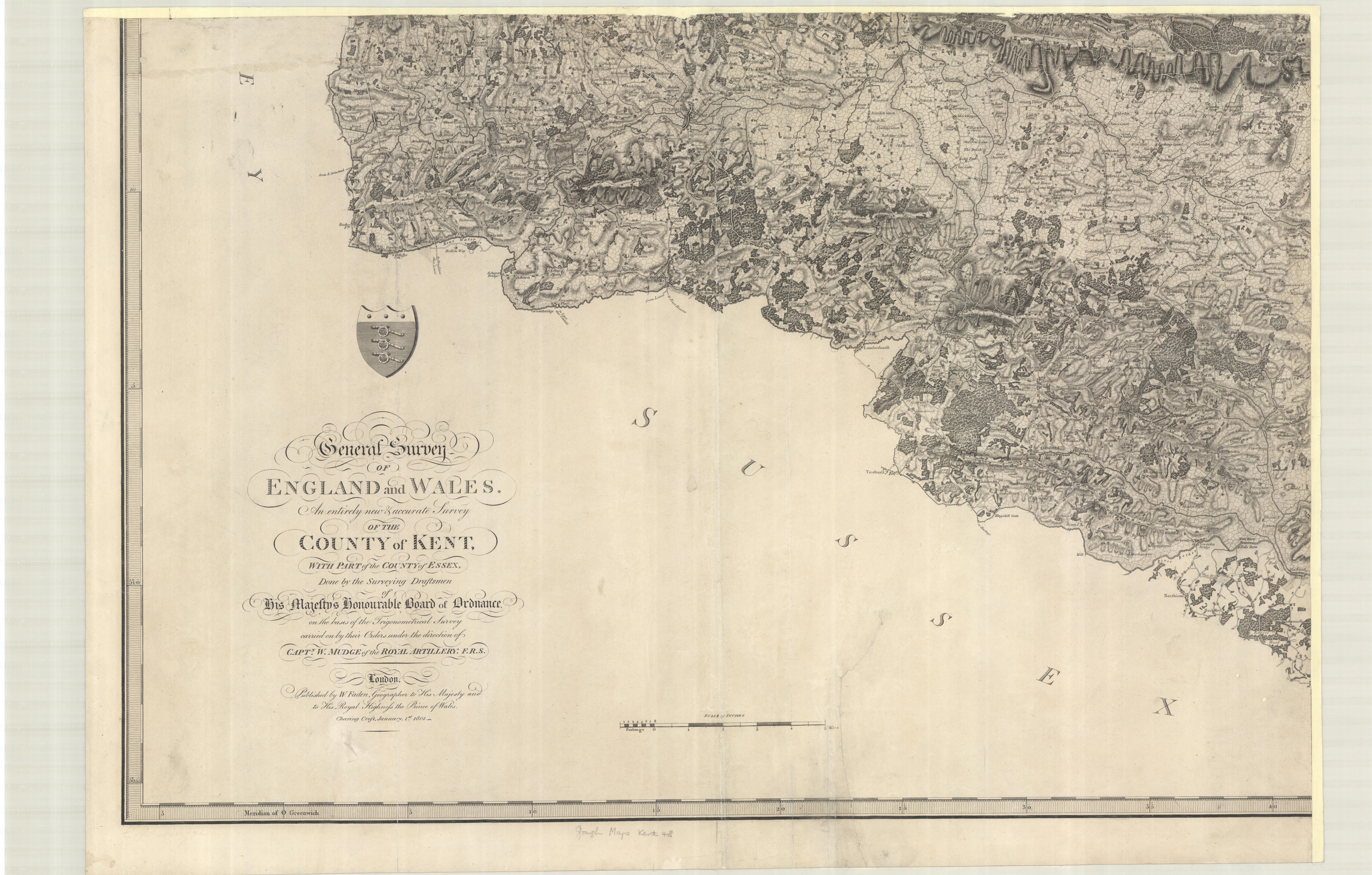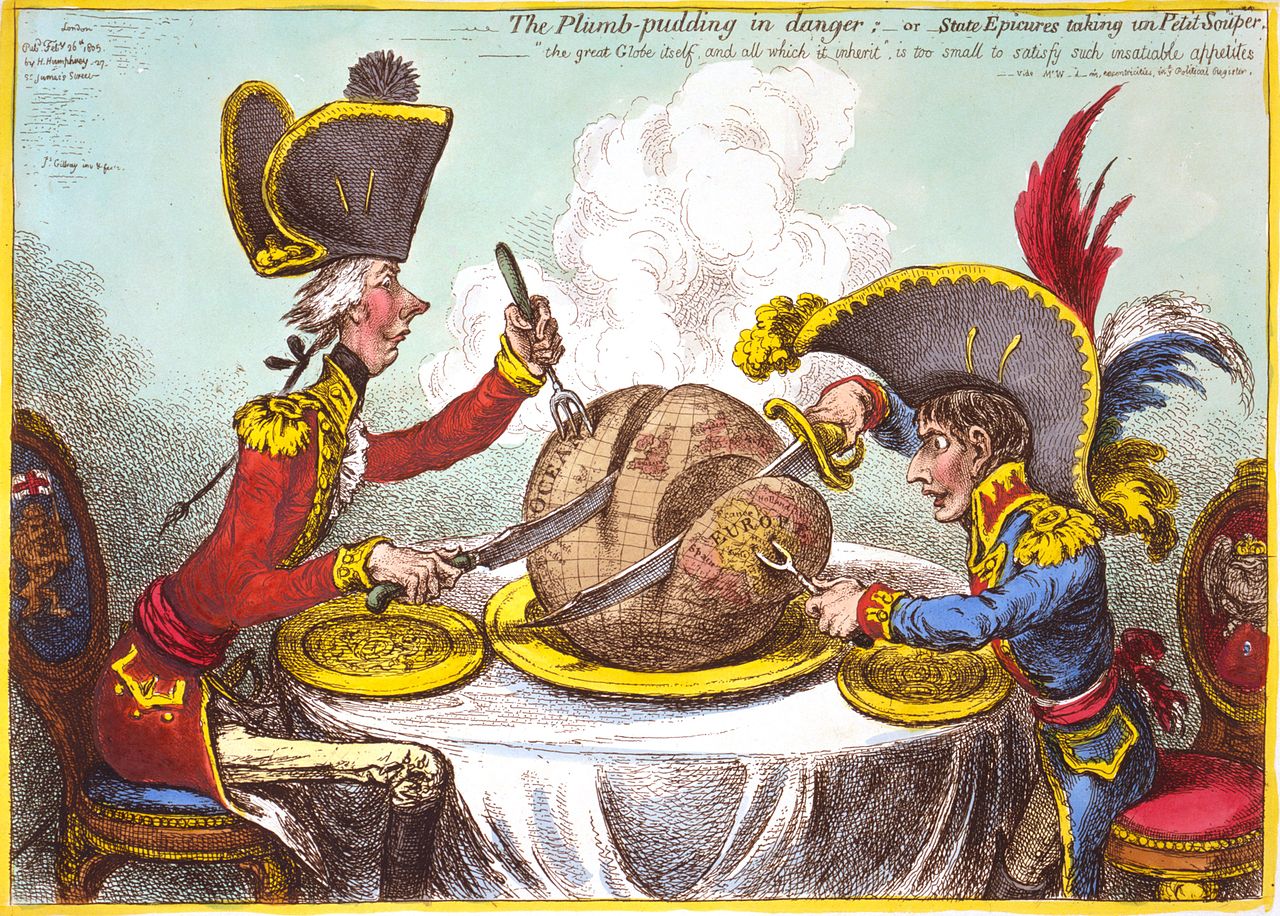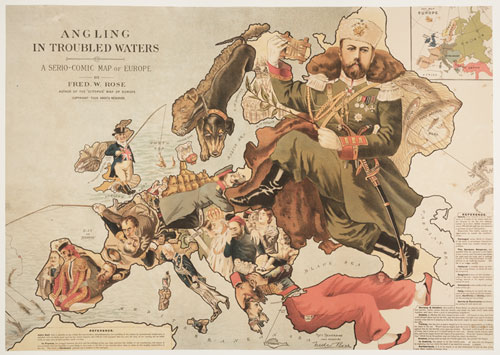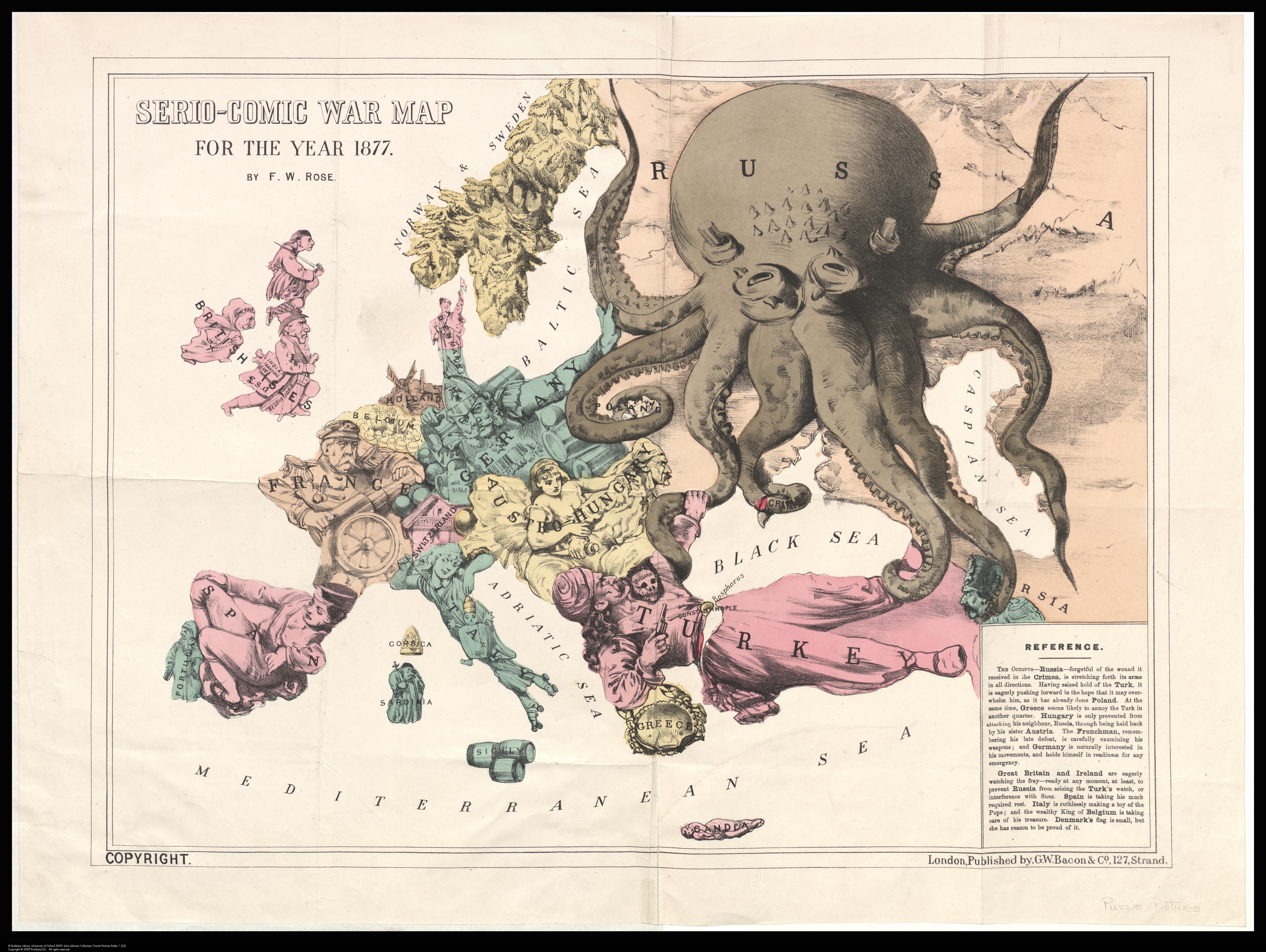Portolan Charts are navigational aids used by seafarers from the thirteenth century through to the 1800’s, by which time Naval charts had begun to be produced, and published in number. The majority of portolans are produced on vellum – an animal skin which has been scraped clean and then stretched out on a rack – with some charts attached to boards and folded. Printed charts begin to appear in the early 1500s. Naviagtion is by use of rhumb lines and compass points, by taking readings of compass directions and speed to determine the course needed to be set.
Page of portolan showing coasts of part of Britain, Ireland, France and Northern Spain
Portolans are often objects of great skill and beauty, and are an early and evocative record of the start of discovery by European explorers. The images shown here are from the earliest Portolan in the Bodleian, dating from the early 1400’s. This portolan is drawn onto vellum and then backed onto a wooden board and shows, over seven charts, the areas of the Mediterranean Sea, the European Atlantic coast and the Black Sea.
Page of portolan showing Italy and Sicily
Though the portolan gives no details of production it is believed to have been produced in Venice and came to the library in 1834 as part of the Douce collection.
Front cover
Portolan charts are often heavily decorated. Ships sail the oceans, wonderful creatures inhabit the lands and some feature the Madonna and Child. Compass roses can often be very eleborate, sometimes including gold leaf in the design.
Inside front cover showng Annunciation
While the charts featured in this portolan are not as decorated as later charts held in the Bodleian the cover, front and back inner sleeves are beautifully created works of art. The cover is a wooden board inlaid with ivory and coloured stone while the inner sleeve shows the Annunciation, with the Angel Gabriel telling Mary of the immaculate conception while the back features Saint Mark, patron Saint of Venice and Saint Paul.
Inside back cover showing Saints Mark and Paul
The portolan was originally enclosed in a leather embossed slip-case, and would have been used by sailors navigating the seas and oceans shown on the maps. The portolan, leather case and notes are now housed separately in a specially made box.
Front of slip-case
Items belonging to Francis Douce were donated to the Library after his death in 1834. Douce was for a time Keeper of Manuscripts at the British Museum so the Bodleian is lucky to have his collection of books, manuscripts and other items, numbering over 19,000 volumes.
Untitled book of seven portolans, early fifteenth century, possibly Venice. MS Douce 390














